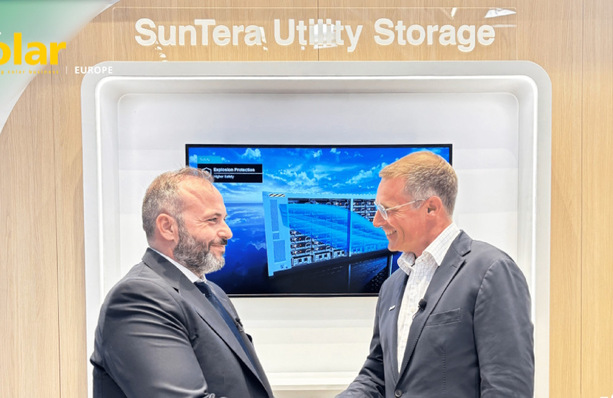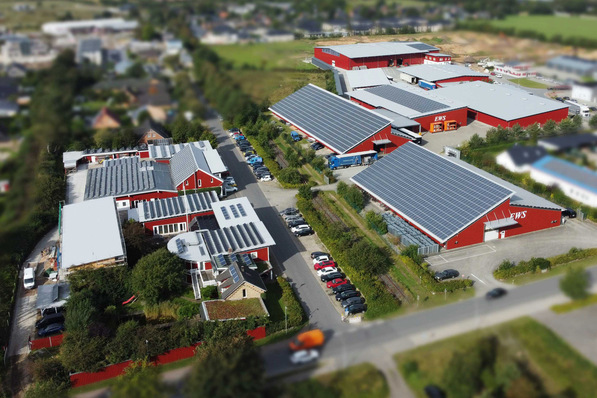More and more charging stations and heat pumps require electrical power, while an increasing number of prosumers feed electricity into the grid. The energy transition not only comes with a higher electricity demand, but significantly more complex power grids. How can operators overcome this issue? By using intelligent, digitalized transformers and secondary substations that make their distribution grids transparent and flexible.
This solution and many others for the modernization, digitalization and flexibilization of the power grid will be presented by companies at EM-Power Europe 2023, the international exhibition for energy management and integrated energy solutions. Visitors will gain insights into new developments, such as smart grids, the integration of prosumers, e-mobility and power-to-heat in a holistic renewable energy system. EM-Power Europe is part of The smarter E Europe 2023, Europe’s largest platform for the energy industry, and will take place from June 14–16 at Messe München.
The energy transition comes with enormous challenges for grid operators: While more and more prosumers generate decentralized electricity using PV systems, for instance, which is partly consumed on-site and partly fed into the grid, the energy demand is continuously growing due to the electrification of the transportation and heat sectors.
Transparency in low-voltage grids through digitalized transformer stations
The accelerated expansion and the modernization of local and regional power grids can provide relief. Ulrich Hempen, Vice President Business Unit Solutions at WAGO, who was recently a guest on the The smarter E podcast, says: „The energy transition is happening in the low-voltage grid.“ This is why the low voltage grid level needs to become transparent, and that’s where transformer stations play a key role. “So if all homeowners in a village went ahead and installed a PV system tomorrow, then a conventional transformer station would not be able to handle the bidirectional flows of energy. Transformers would need to be digitalized to cope with this kind of flow,” explains Hempen, whose company will present solutions in this field at EM-Power Europe in June at Messe München.
There are about 600,000 transformers and secondary substations in Germany alone. Simple systems are limited to monitoring operational data to enable condition-based maintenance. Advanced systems, like the ones necessary for the energy transition, help operators take every-day decisions. Intelligent transformers continuously gather data to create a clear picture of a system’s status, operating data and thermal load. Virtual models (digital twins) can help to simulate operating points, load profiles and overload scenarios based on current operating values. This allows for decisions to be based on data. The grid operator collates all data regarding the power grid, like demand and utilization forecasts. Carsten Ziegler of Mitnetz Strom, another exhibitor at EM-Power Europe, believes that digital secondary substations (DSS) are essential for smart grids at medium and low voltage levels. With the help of DSS, Mitnetz Strom is planning to make its medium-voltage grid completely, and its low-voltage grid partially, transparent by 2026. The transformer stations are digitalized using so-called retrofit kits.
To avoid overloading the power grids during the energy transition, the transformers must be retrofitted while the expansion of renewable-energy power plants, heat pumps and charging infrastructure for e-mobility is underway. “Intelligent, digitalized transformers or secondary substations are helping grid operators provide more operational transparency as well as flexible operation,” Lasse Kleinjohann Head of Customer Operations & Engagement, Digital Grid, IoT & Edge at Siemens Energy states. Smart technology thus sheds light on the previously untransparent distribution grid. By simulating operating points, grid fluctuations can be controlled and balanced. Kleinjohann recommends including the technological basics for digital intelligent transformers in all new transformers.
Solutions for digital power grids at EM-Power Europe 2023
Additional insights and technical expertise in digital secondary substations – from single components for digitalizing secondary substations to entire transformer stations – will be presented to visitors at EM-Power Europe 2023, the international exhibition for energy management and integrated energy solutions. Apart from digitalizing secondary substations, additional solutions are necessary in order to keep the power grid of the future stable. At the exhibition, visitors are also provided with information on topics such as sector coupling, energy and load management, flexibilization, virtual power plants, electricity trading and many more.
The modernization, digitalization and flexibilization of the power grid can only be achieved through future-oriented products – and they will be showcased at EM-Power Europe. This will mark the first year in which the EM-Power AWARD is bestowed to endorse innovations contributing to a stable and intelligent 24/7 supply of renewable energies. EM-Power Europe Conference from June 13–14, 2023 at International Congress Center München (ICM) is the ideal place for experts to deepen their knowledge of energy management and integrated energy solutions. For an overview of all the companies that will be present at EM-Power Europe 2023 please see our current exhibitor list.
EM-Power Europe and the parallel exhibitions Intersolar Europe, ees Europe and Power2Drive Europe will all take place from June 14 to 16, 2023 as part of the innovation hub The smarter E Europe at Messe München. For more information, please visit:
www-EM-Power.eu www.TheSmarterE.de (hcn)
Join our webinar March 16, 2023: Battery Energy Storage Systems: Worth the hype?







